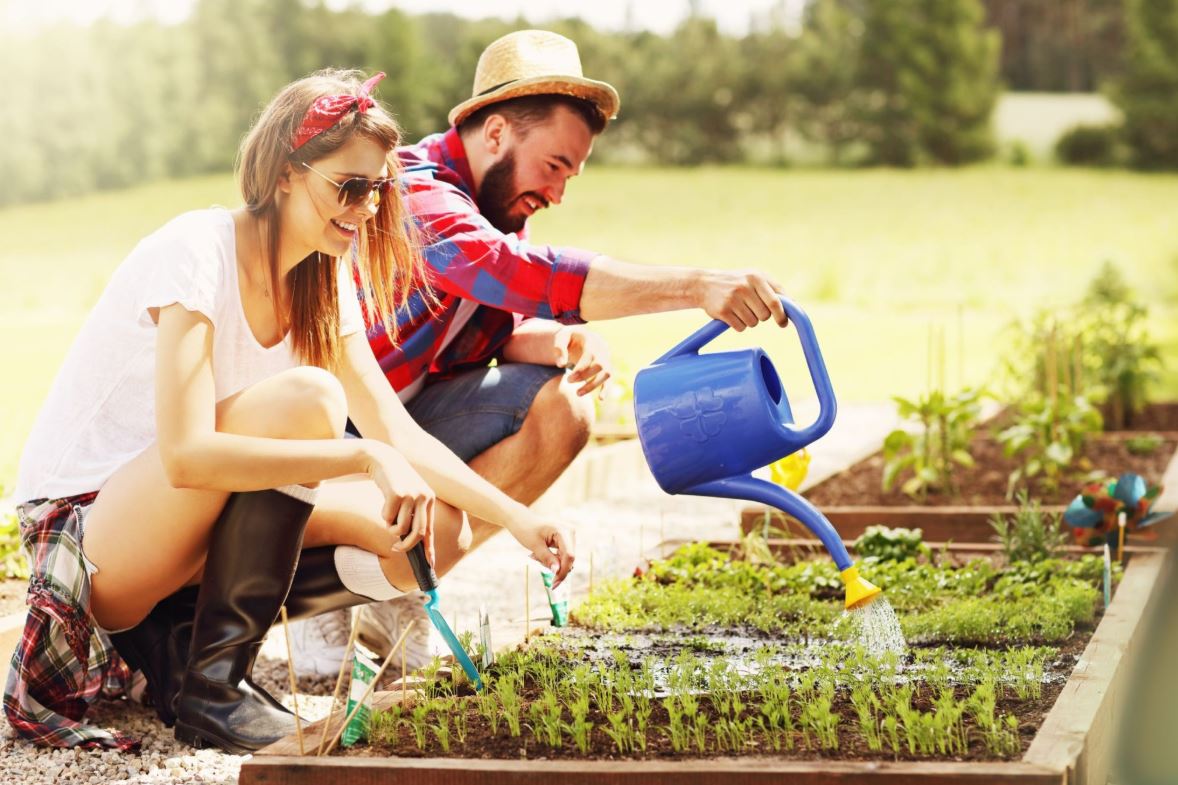Plants are often grown best in their native environments. This article helps to list many of the benefits of growing native plants, and the way that foreign plants react to certain environments. Based on many factors of growth, such as light and soil acidity, it may be wise to look into artificial environments, greenhouses or indoor growing of specific plants.
When designing your garden, choose high-yield crops, such as tomatoes and herbs. These items will allow you to maximize the space you have available in your garden. The more produce you can grow at home, the more money you can save in your grocery bill each month, so it pays to know what will produce the most for your efforts.
Planting a bare-root rose. Bare-root roses are best planted at the beginning of their dormant period to lessen the shock of transplanting. If the roots look dry, soak them in a bucket of water for a few hours before planting. Remove diseased or damaged stems, and trim any thick roots by a third. Place the rose in a freshly dug hole, spreading out the roots and checking that the bud union is slightly above ground level. Backfill with soil and water thoroughly.
Check for weeds often in your garden as they will leech nutrients from the soil. Weeds can grow at a high rate of speed and overwhelm the resources available to your plants. Take the time to check for weeds at least twice a week to catch them while they are new shoots.
If space is an issue, try vertical gardening. Even with the limited space of condos and townhouses, many people have thriving gardens in the small area they have using vertical gardening. By using trellised gardens one can grow pole beans, tomatoes, and cucumbers in a small place during the summer, and in the fall a wide variety of greens can be grown in the same space.
Don’t buy plant pots. Commercial plant plots from the garden center can be very expensive, anything from $5 to $100. Any container with a few draining holes pierced into the bottom of it can serve as a plant pot, so to save a lot of money, start recycling food containers today.
Be sure to water a tomato patch no more than once every five to seven days. However, when you do water, be sure to give the ground a thorough soaking. Tomatoes do best if the soil is wet deeply, unlike many plants which prefer a light misting more often. Also, be sure to water the ground, not the plants.
Plant self-seeding flowers. Let your flowers do the work of re-stocking the garden for you. If you allow your flowers to go to seed, the following year you will have new seedlings popping up everywhere. If things get too crowded, or if plants appear in the wrong place, simply thin them out. Good self-seeders are alyssum, bellflower, forget-me-not, poppy and columbine.
Create a certain mood for your garden. Just as with interior design, one of the most exciting aspects of garden design is using color to create a mood or feeling. Use soft blues and purples for a cool and soothing atmosphere, yellows for cheerfulness, and reds and oranges to create excitement. If you are uncomfortable when deciding on colors, choose plants with grey-green or silvery foliage to mix in with your flowers. They will act as a ‘buffer’ between incompatible colors and link different color schemes.
If you want to make plant markers from objects you have around the home, try using old window blinds. Cutting up your old blinds will let you make markers that are almost identical to the ones you’d buy at a store. They’re very durable, and should easily be able to survive bad weather.
To make your own miniature greenhouse, simply cover a pot with an old plastic bag. This will mimic the humid environment that allows plants inside a greenhouse to thrive. If you’d also like to protect your plant from the weather, build a dome out of a sturdy plastic and place it atop the plant.
To reiterate from this article, it’s generally best to grow native plants in their native lands. This applies to grass, trees, fruits and vegetables and even, some herbs. Plant life has adapted over millions of years to best suit its environment, whether it be through frost-resistant stems or competitive uptake of minerals. Understanding the basics of these evolutionary advancements can benefit, even the amateur gardener.

